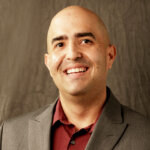WASHINGTON — The number of people who have died from drug or alcohol related overdoses in Maryland is on the rise. In new numbers released by the Maryland Department of Health and Mental Hygiene, overdose deaths are up 21 percent in the state compared to 2014.
Last year, 1,259 people died from an alcohol- or drug-related overdose, setting a troubling record for the state, according to the report.
“This is something all across the state, there is no place in the state that is immune from this epidemic,” said Howard Haft, deputy secretary of the state’s health department.
A comparison between current figures and those from five years ago within the report shows that overdose deaths have more than doubled for men and have risen 65 percent among women.
A majority of the deaths are opioid-related — that includes heroin, prescription drugs and the synthetic opioid known as fentanyl. Fentanyl and heroin are to blame for much of the increase in overdose deaths.
Heroin deaths were up 29 percent in Maryland, and deaths from illegally-produced fentanyl use nearly doubled last year.
Fentanyl, which is the drug officials say claimed the life of pop icon Prince, is a relative newcomer when it comes to the nation’s battle against overdoses. In 2010, 29 people died in Maryland from using the drug intended for treating severe pain. At the end of 2015, the total number of fentanyl-related deaths stood at 340 people.
Haft said many drug pushers are dealing in fentanyl because it is cheaper and is 50 times more potent than heroin.
“People take it, and it’s so much more potent, and it causes respiratory arrest and they die,” Haft said.
A crack down on prescription medication abuse has slowed the rise of prescription drug deaths, but the number is up 6 percent from 2014.
“Sadly, there was a lot of prescribed opioid in the environment and many people became addicted,” Haft said. Once prescription drugs became harder to get, many turned to heroin, followed by the more potent fentanyl.
Deaths attributed to too much alcohol use have been something health officials continue to battle, yet fatalities still rise. There were 309 alcohol-related deaths last year, which is a 13 percent increase from 2014 and a 69 percent increase from 2010.
The Baltimore area is struggling the most with an increase in drug and alcohol intoxication deaths; the City of Baltimore experienced the highest number of deaths.
As the state’s battle continues, Maryland has taken steps to try and turn the numbers around. At the end of 2015, the state made it easier for people to obtain Naloxone. After training and certification, anyone can obtain the drug, which reverses the effects of an opioid overdose without a prescription.
Maryland joins a growing list of states that have made it easier for someone to obtain the lifesaving drug. Virginia, which is also dealing with rising fatalities, allows pharmacies to give the drug to individuals who believe they need it for at-risk family members and friends.
The state is also hopeful that it will see a decrease this year with the introduction of the Maryland good Samaritan Law, which provides protections from arrest and prosecution for people who may be worried about getting in trouble with the law if they seek help for someone suffering from an overdose.
The deputy secretary said that because the problem is being seen across the nation, state officials will continue to work with other states and the federal government to turn the tide. But he said things may get worse in Maryland before they get better.
Haft added, “I don’t believe honestly that we’ve reached the peak of that trajectory yet. There is still a lot of work that needs to be done.”







